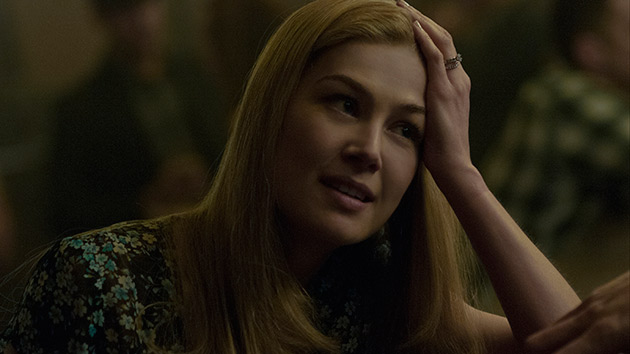Running 149 minutes and foregrounding plenty of provocative ideas about gender roles, human relationships, and the mass media, David Fincher's latest, Gone Girl, gives audiences a lot to chew on. Shot entirely at 6K with the Red Dragon, it provided plenty for Fincher's post team to bite off, too. We asked two frequent Fincher collaborators, post supervisor Peter Mavromates (House of Cards, The Curious Case of Benjamin Button, Zodiac, Panic Room and Fight Club) and assistant editor Tyler Nelson (House of Cards, The Girl with the Dragon Tattoo, The Social Network, and The Curious Case of Benjamin Button) via email about their post workflow, which put FotoKem's NextLAB and Adobe Premiere Pro CC to the test on a high-end feature project.
StudioDaily: Why was Adobe Premiere Pro CC chosen for Gone Girl?
Peter Mavromates: We were looking for a solution that would integrate some of our VFX post flow with a company that had long-term ambitions for post production.
Tyler Nelson: We also appreciated the versatility of Premiere and how easily it could handle our film’s atypical pipeline. There are many features of Premiere that provided us great latitude in tackling everything we wanted to do with this film.
SD: How did you settle on FotoKem’s NextLAB workflow?
PM: We tried out NextLAB on the first season of House of Cards. They were one of the pioneers in the digital dailies workflow, so they had hundreds of projects worth of experience to offer. We often ask for a number of custom features. With that wealth of experience, we thought NextLAB was in the best position to meet our demands.
TN: NextLAB is our favorite dailies processing and archiving cart. It is simple yet very powerful. With that amount of footage that we acquire on each of our productions, the NextLAB Mobile is capable of keeping up with our dailies demands.
SD: What other important customizations enabled the Premiere-NextLAB pipeline?
PM: We have a very intensive Filemaker database and NextLAB helped capture much of the data we wanted.
TN: We also try to extrapolate as much metadata from the NextLAB as possible and incorporate it into our proprietary codebook. With this deluge of valuable information at our fingertips, we have been able to transcode, deliver VFX shots, and conform the film without leaving our building.
Was David Fincher completely satisfied with his experience using this workflow? Were you?
PM: In ‘Fincherland,’ we are never completely satisfied. We always want more, and continue to ask for more and better features.
Do you have any advice for other feature filmmakers considering using Premiere Pro?
PM: In order to give Fincher more flexibility with post production time and money, we try to bring as much work in house as possible. Premiere Pro is a path to that independence.
Crafts: Editing Post/Finishing
Sections: Technology
Topics: Q&A adobe five questions Fotokem gone girl nextlab peter mavromates premiere pro cc tyler nelson
Did you enjoy this article? Sign up to receive the StudioDaily Fix eletter containing the latest stories, including news, videos, interviews, reviews and more.










